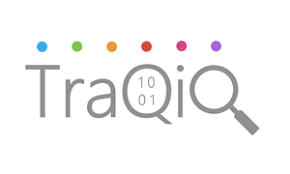As a business owner in the microfinance sector, you understand the pivotal role microfinance institutions (MFIs) play in delivering essential financial services to economically marginalized communities.
Operating within resource-constrained environments, you’ve probably encountered a series of operational challenges that can hinder the effectiveness of your MFI.
In your role, you must explore these operational challenges and understand how technology can empower your institution to overcome these hurdles.
By leveraging technology, you can enhance the impact and reach of your MFI while better serving the underserved.
What are the operational challenges faced by microfinance institutions?
As a Microfinance Business Owner, you may face these major operational challenges, including:
- Over-Indebtedness
One of the primary challenges is the risk of over-indebted clients. It can lead to defaults and financial distress for borrowers.
A 2021 study found that over-indebtedness is a serious problem among microfinance borrowers in some countries. MFIs need a way to assess a borrower’s capacity to take on additional debt.
- Inadequate Investment Validation
Ensuring that funds are used for productive purposes is crucial. Without adequate validation, there’s a risk of misallocation of resources.
A study found that 15% of microfinance loans are used for non-productive purposes, such as consumption or debt repayment.
- Lack of Enough Awareness of Financial Services in the Economy
In many underdeveloped regions, potential borrowers lack awareness of the existence and benefits of microfinance services.
la Global Findex database reported that 1.7 billion adults worldwide, predominantly in low and middle-income countries, did not have a bank account or access to formal financial services.
Hence, it indicates a lack of awareness and accessibility.
- Regulatory Issues
A Microfinance CEO Working Group study found that 40% of microfinance CEOs list regulatory compliance as a major challenge.
Regulatory challenges, such as stringent licensing requirements, can be a barrier for new MFIs trying to enter the market or existing ones trying to expand their operations.
- Choice of Appropriate Model
As of 2021, MFIs were increasingly exploring for-profit models to ensure sustainability and access to capital markets.
Choosing the right operational model for an MFI is vital, as different models have their own strengths and weaknesses. Selecting the right one is often a challenge for MFIs.
Factors that could disturb the sustainability of MFIs
Here, you can discuss the factors that could disturb the sustainability of your Microfinance Business:
- Possible Over-Lending by Banks
Sometimes, MFIs face stiff competition from traditional banks that may over-lend to the same clients, increasing the risk of over-indebtedness and defaults.
- Data Asymmetry
Lack of accurate and up-to-date client data can make it difficult for MFIs to make informed lending decisions and manage risk effectively.
- Receding Not-for-Profit Segment
Some MFIs started as not-for-profit entities but are transitioning to for-profit models, which can affect their mission and how they serve their clients.
- Local Political Influences
Political factors can impact the operations and stability of MFIs, especially in regions where the rule of law is weak or subject to change.
How do we overcome the challenges faced by microfinance institutions using automation?
Technology is the key to addressing the challenges that microfinance business owners face. It allows the sector to offer loans to rural communities more efficiently and effectively.
We offer TraQSuite, a highly integrated software solution tailored for microfinance institutions. With TraQSuite, we empower MFIs with cutting-edge banking capabilities, enabling them to compete on par with mainstream commercial banks.
This comprehensive suite provides a 360-degree view of borrowers, facilitating well-informed decision-making for lenders. This insight into a client’s financial history and creditworthiness enhances risk assessment. It reduces the likelihood of over-indebtedness and ensures the long-term sustainability of microfinance operations.
By partnering with us and adopting TraQSuite, microfinance institutions can harness the power of technology to overcome their challenges and provide rural populations with more accessible and efficient financial services.
How TraQSuite can strengthen microfinance institutions?
At TraQSuite, we understand that the success of microfinance institutions (MFIs) hinges on their ability to improve operations. Our TraQSuite offers a range of features to help MFIs enhance their efficiency and effectiveness, including:
- Automation of Administrative Tasks
TraQSuite automates routine administrative tasks like client onboarding, loan application processing, and repayment tracking. This automation significantly reduces operational costs and minimizes the potential for human errors, ultimately making us more efficient.
- Real-Time Reporting and Analytics
Our system provides real-time reporting and analytics, granting MFIs valuable portfolio insights. It empowers us to make data-driven decisions, crucial for assessing over-indebtedness and validating investment choices.
- Enhanced Productivity
Automating processes enables MFIs to serve more clients with the same resources. It increased productivity not only expands our reach but also allows us to potentially reduce interest rates, making microfinance services more accessible.
- Comprehensive Risk Analysis
TraQSuite offers advanced risk analysis tools, helping us effectively manage credit risk. This proactive approach aids in preventing over-indebtedness and ensuring the long-term sustainability of our operations.
- Advanced Credit Scoring Models
Our system includes sophisticated credit scoring models considering many data points. It reduces our reliance on traditional credit scores, which may not be as relevant in the context of microfinance clients.
- Early Warning Systems
TraQSuite is equipped to establish early warning systems that identify potential issues within the loan portfolio. This capability enables us to take proactive measures to mitigate risks and safeguard the interests of our clients.
- Real-Time Data Digitization
We offer real-time data digitization through TraQSuite, allowing you to input data directly into the system from the field. Field agents can input data directly into the system as they interact with clients, improving data accuracy and reducing the chances of manual errors.
- Cloud-Based and Secure
TraQSuite stores the digitized data on a secure and encrypted cloud platform, ensuring that your data is safe, easily accessible, and can be backed up. This approach minimizes the risk of data loss.
- Customizable Digital Forms
Our solution empowers you to create and customize digital forms that meet your data collection needs. This flexibility allows us to adapt to various client requirements and regulatory changes, improving data collection and management efficiency.
By choosing our solution, TraQSuite, you can benefit from these features to enhance your operations and ultimately achieve greater success. We are dedicated to supporting the microfinance sector’s mission to provide financial services to underserved populations.
Ways that technology can help MFIs
As a Microfinance business owner, you must know how you can use technology to enhance the effectiveness of your MFIs:
- Mobile Banking Solutions
Technology can give your clients easy access to their accounts, allowing them to make payments, check balances, and access financial services through mobile apps. It enhances convenience and accessibility.
- Digital Financial Literacy
You can use technology to provide your clients with financial literacy resources, including educational videos, interactive courses, and informative apps. It helps your clients make informed financial decisions.
- Customized Product Development
Data analytics and customer insights can assist in tailoring financial products to clients’ specific needs and preferences, promoting responsible borrowing and economic empowerment.
- Ecosystem Integration
Technology can facilitate integration with other financial service providers, allowing you to offer a broader range of services, such as insurance and remittances, to your clients.
Conclusion: Implementing technology solutions
Microfinance business owners face many operational challenges that can hinder their ability to serve their target populations effectively. However, technology, exemplified by our TraQSuite, offers powerful tools to empower these institutions.
Our solution offers automation, real-time analytics, risk management, and advanced credit scoring models. It can help you address over-indebtedness and other operational challenges.
Furthermore, technology can enhance financial literacy, customize products, and integrate MFIs into broader financial ecosystems, making your services more accessible and client-centric.
Embracing technology is not just a way to overcome challenges but a path towards a more sustainable and inclusive financial system for all. As you leverage technology to your advantage, you can better fulfill your financial inclusion and empowerment mission.




















